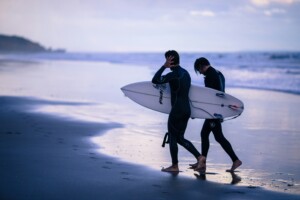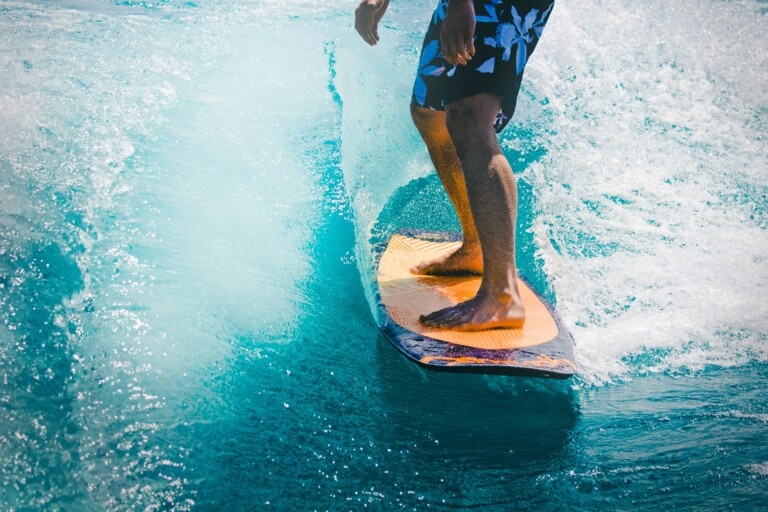Catching white water waves is one of the most exciting moments for new surfers. The “white water” refers to the foamy, broken waves closer to shore, perfect for learning the basics of balance, paddling, and standing up on your board. Whether you’re at a popular surf spot or a quieter beach, this guide will walk you through the steps to successfully catch white water waves and build your surfing confidence.
1. Choosing the Right Spot
The first step is picking a beach with gentle, consistent waves. Most beginner-friendly beaches have white water that breaks closer to shore, creating the ideal environment for learning. Check surf reports or ask locals where the best white water can be found. Look for smaller waves on days with lower swell, and avoid spots with strong currents or crowded lineups.
2. The Right Gear
For white water waves, you’ll need a soft-top surfboard, which is easier to handle and provides more stability. Beginner boards are generally longer and wider, making it easier to catch and ride waves. You’ll also need a wetsuit if the water is cold and a leash to keep your board attached to your ankle.
3. Positioning Yourself in the White Water
Once you’ve geared up, it’s time to paddle out into the white water zone. For beginners, you don’t need to go far; white water breaks closer to shore. Walk your board out into the water until it’s deep enough that the waves are breaking in front of you. When you’re at about waist-to-chest depth, lie on your board with your feet slightly hanging off the back.
4. Mastering the Paddle
Paddling is key to catching any wave. To paddle effectively, keep your body centered on the board and use long, smooth strokes with cupped hands. Keep your chest slightly raised and your head looking forward.
As a white water wave approaches, paddle hard to match the speed of the wave. Timing is everything here—start paddling as soon as you see the wave building behind you, not once it’s already on top of you. The goal is to get the board moving at the same speed as the wave before it reaches you.
5. Catching the Wave
Once the wave picks up your board, you’ll feel a sudden push forward. At this point, stop paddling and let the wave carry you. Keep your weight centered on the board and your body relaxed. For your first few waves, focus on staying prone (lying flat) to get a feel for the momentum of the wave.
6. Standing Up (The Pop-Up)
When you’re ready to stand, practice the “pop-up” technique. In one smooth motion:
- Place your hands flat on the board near your ribcage.
- Push your upper body up as if doing a push-up.
- Quickly bring your front foot forward to where your hands were, and plant your back foot behind.
- Stay low, bending your knees to maintain balance. Keep your eyes focused forward, not down at your feet.
At first, you may fall, but that’s part of the learning process! With practice, you’ll be popping up more smoothly with each wave.
7. Ride It Out
Once you’re standing, keep your knees bent, your back straight, and your eyes looking forward. Shift your weight to maintain balance and let the wave carry you to shore. Enjoy the thrill of riding that first white water wave!
8. Safety Tips
- Always be aware of your surroundings: Look out for other surfers, swimmers, and obstacles in the water.
- Practice surf etiquette: If you’re in a busier surf zone, be mindful of others and avoid cutting them off.
- Watch out for rip currents: If you find yourself being pulled out to sea, paddle parallel to the shore to escape the current.
9. Practice Makes Perfect
Surfing is all about persistence. The more you practice, the better you’ll get at reading waves, paddling at the right time, and perfecting your pop-up. Every beach and every wave is different, so each session is an opportunity to learn something new.
Catching white water waves is the perfect starting point for any beginner surfer. With the right equipment, proper technique, and lots of practice, you’ll be riding waves in no time! Remember to stay patient and have fun—after all, the ocean is one of the best classrooms you could ever ask for.
Happy surfing! 🌊











